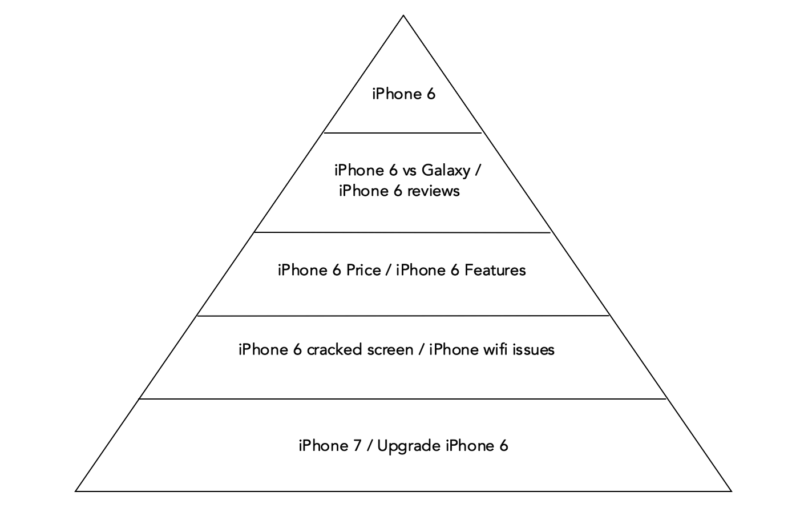As search engine optimization (SEO) professionals, we want to help new customers discover our clients’ businesses — but columnist Casie Gillette reminds us that being there for the customer after they’ve already discovered us is just as important.
With over 3.5 billion searches per day, it’s no secret that search engines like Google have become a key place for consumers to find products and services. It’s the reason people like me have a job!
The majority of companies looking to start a new SEO program would like to improve their overall search presence, increase brand visibility and drive new visits.
Pay attention to that last piece — new visits.
While new visits are important, when it comes to purchasing decisions, most people visit a site more than once. In fact, according to a recent report by Webloyalty and Conlumino, the average consumer consults about five channels before making a purchase, meaning the people converting are likely going to be return visitors.
As SEOs, it’s important not to get hung up on optimizing only for new visits. We also must focus on the buying cycle itself to ensure we are giving our customers the information they are looking for when doing their longer-term research.
We also must think beyond new customers. For example, many of my clients are technology providers in markets with stiff competition. With a competitive market and the potential for customers to go elsewhere, they need to be showing their existing customers they are still the best option.
How do we do this? Well, the obvious answer is content, but there is much more to it: Understanding the right keyword targets, the right type of content for the particular time in the buying cycle, the right off-site targets and more.
Below I’ve outlined a few key places to focus when moving your SEO program beyond discovery:
Keywords/product or service themes
Last year, I wrote “How To Build A Customer-Centric Keyword Strategy.” The gist of the post was that search is evolving and so, too, must our keyword strategy. With things like voice search, the growth of mobile and increasing customer research time, we can no longer just target a singular keyword or keyword phrase.
As search marketers, our keyword strategy should focus on all aspects of the customer journey, including top-of-the-funnel queries, mid-funnel queries, and even post-purchase queries. Take, for example, someone looking for an iPhone 6. At a high level, targets would be something like the following:

It may seem simple, but when management is pushing for new visits and new customers, it can be easy to just focus on the top of the funnel.
Want to find out what questions customers and potential customers are asking? Tools like Keyword.io and FAQFox can help, but don’t forget to talk to your support team, visit product forums or support sites, evaluate review sites and scout social media for product mentions and competitor mentions.
Customer support & reviews
While a number of studies have been done around customer reviews and the impact they have on buyers, one stat that has stood out to me over the past couple years is this: 90 percent of consumers say their buying decisions are influenced by online reviews.
That’s crazy! But to be honest, as someone with a bit of a shopping problem, I absolutely believe it.
The challenge is that most businesses aren’t garnering these reviews.
As a search marketer, part of my job is making sure that I am not just optimizing my client’s site but am optimizing the search results themselves. That means making sure business listings are updated, partners are using the right logo and — you guessed it — review sites contain reviews.
Now, I have little control over whether or not reviews get written, but I can recommend that my clients pursue those reviews, and I can provide guidance on how to do so.
The other side of this is ensuring your customer support information is optimized. Businesses will often use third-party support platforms but not take the extra step to optimize them for search. Considering a third-party support platform? Make sure it can be optimized.
Additionally, make sure your site contains the basics, like FAQs, click-to-call phone numbers and testimonials. Even your blog can be of use.
Each of these touch points can help give customers and potential customers the information they need to move further down the funnel.
Third-party mentions & bylines
Have you ever been reading an article where you see a quote from a vendor you use? It’s pretty cool, and it’s also reassuring to know that the person you are relying on is at the top of their game.
For the majority of our clients, we spent a lot of time securing bylines on third-party sites. These range from niche sites to more well-known business publications.
The goal is to acquire links (Hey, we are still SEOs), potentially grab another space in the search result and showcase the client as a thought leader to their peers, existing customers and potential customers.
While I won’t go into the specifics of actually acquiring third-party bylines (You can read about that here, here, here and probably a ton of other places), I mention this tactic as a way to make sure you can give consumers information in other ways and in other places.
Final thoughts
The end goal of just about any marketing program is revenue. However, don’t get stuck only thinking about revenue at the top level. Think about where your audience is finding information and how your SEO efforts can impact revenue further down the funnel.
[Article on Search Engine Land.]
Some opinions expressed in this article may be those of a guest author and not necessarily Marketing Land. Staff authors are listed here.
Marketing Land – Internet Marketing News, Strategies & Tips
(18)
Report Post









